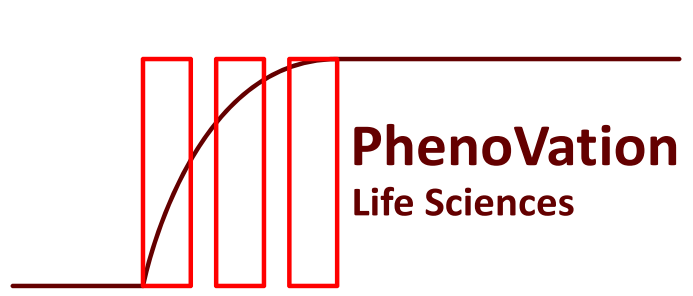Plant Videos
These videos use examples to display how the systems can be put to use.
Black nightshade and herbicide
Two droplets of 5 microliter of metribuzin (non-systemic herbicide) are applied to two different leaves of Black Nightshade. Within 6 hours, the effect of the herbicide can be observed in the Fv/Fm image (right side). Even after 70 hours, the interaction of the herbicide and the leaf is not detectable in the colour image (right side). The PlantExplorer can, at an early stage, detect and quantify the effects of the herbicide, which have a strong correlation with the total biomass of the plant after 14 days.
Cabbage and Xanthomonas
This cabbage seedling is exposed to the bacterium Xanthomonas. Via guttation, the bacterium enters the leaf. Within 48 hours, the PlantExplorer shows the presence of the bacterium. Visually (left image), no interaction of bacterium and leaf can be observed. The cotyledons show low photosynthetic efficiency and will not contribute much to the plant’s energy production.
Phytophthora spot inoculation on potato leaf example 1
This example video shows chlorophyll fluorescence images on the top left, colour images top right, calculated Fv/Fm bottom left and calculated area with low Fv/Fm at the bottom right side of a potato leaf. The leaves were spot inoculated with phytophthora spores. The images are taken from above through a petri dish.
Phytophthora spot inoculation on potato leaf example 2
This example video shows chlorophyll fluorescence images on the top left, colour images top right, calculated Fv/Fm bottom left and calculated area with low Fv/Fm at the bottom right side of a potato leaf. The leaf was spot inoculated with phytophthora spores on the bottom through a single droplet; the images are taken from above through a glass cover. The colour image shows necrosis around the inoculation spot, the Fv/Fm image shows an enlarged damaged area, clearly showing a light blue colour on the bottom.
Potato fungus infection
These potato leaves are infected with a type of fungus. You can see it spread through the leaves in several hours. With the PlantExplorer, you can automate these measurements and measure in real time.
Strawberry shelf life
These strawberries were measured over time to show the biological photosynthesis activity in field-grown strawberries compared to greenhouse-grown strawberries. The two strawberries on the right were grown in the greenhouse.
The video shows that red strawberries contain chlorophyll, allowing us to measure these fruits and assess the freshness by using photosynthesis measurements. The results indicated that field-grown strawberries remained fresh for a longer time.

Adres
Agro business park 69-73
6708 PV Wageningen
The Netherlands
Contact
Phone: +316 51978796
Mail: Vincent.Jalink@phenovation.nl




